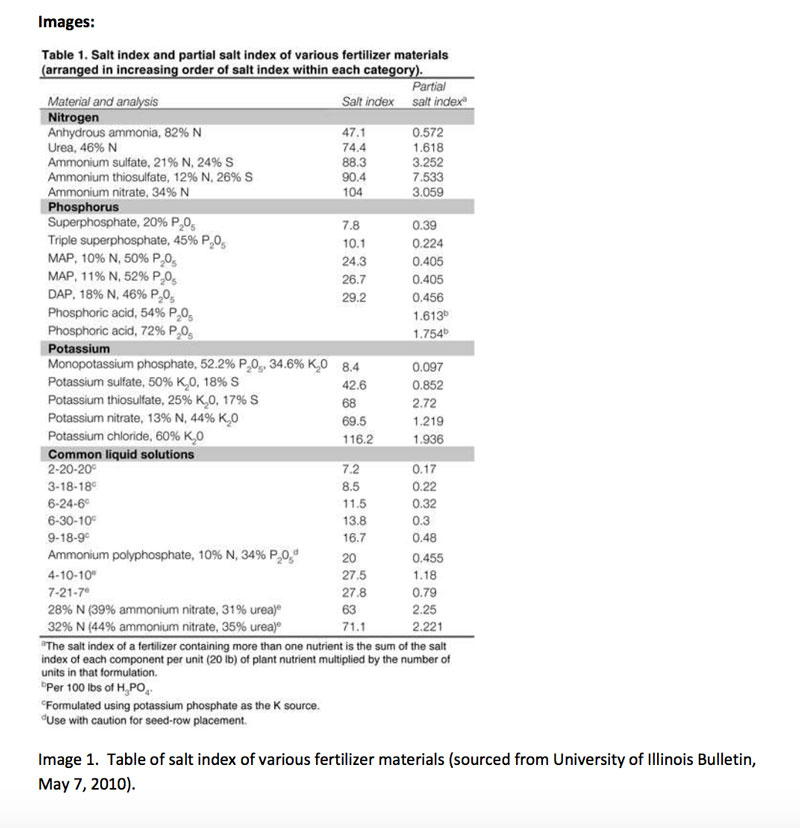Key Points:
- Definition of fertilizer salt index
- How salt injury occurs
- Conditions favoring salt injury
- Products prone to causing salt injury
- How to avoid salt injury
Fertilizer salt index is a measure of salt concentration induced in a soil solution. Salt index is a numeric ratio of the increase in osmotic pressure produced by a selected fertilizer product compared to that produced by the same weight of sodium nitrate (NaNO3), where sodium nitrate is assigned a relative value of 100. Sodium nitrate is used for comparison because it was widely available when the salt index was developed, and because it is 100 percent soluble in water. The salt index of many common fertilizer products is presented in Table 1. Salt injury occurs when the salt is in close proximity to the germinating seed or to growing plant tissue. The presence of the salt creates an osmotic imbalance in which water flows from regions of higher relative water concentration in the plant tissue to regions of lower relative water concentration where the fertilizer is located. This loss of water from the plant tissue causes desiccation injury, often referred to as fertilizer burn.
The salt index does not predict how much product or which formulations can be safely applied, because the potential for crop injury by fertilizer is greater when:
- Fertilizers are applied in close proximity to the seed (known as ‘in-furrow’ or ‘pop-up’ applications)
- Salt-sensitive crops are being grown, like vegetables, sweet corn, etc.
- Soils are more coarsely textured.
- Soils are dry, which prevents normal dilution in the soil and allows high concentrations of fertilizer to remain near the seed or seedling.
- Weather conditions are generally hot and dry.
Potassium chloride (potash) has the highest salt index among the common dry fertilizer products used in field crops. Nitrogen and nitrogen-plus-sulfur products, like ammonium sulfate and ammonium thiosulfate, also present concerns with potential salt injury. Several nitrogen products also produce free ammonia, which may cause additional seedling injury beyond what might be expected, based on salt index alone. A good rule of thumb is to apply no more than a total of 10 lbs/acre of N + K2O in-furrow (based on K2O from potassium chloride). Products with salt indexes greater than 20 should generally not be used for in-furrow applications.
Salt injury can be avoided by separating the fertilizer from the seed in distance and/or time, such as with 2x2 planter applications or soil broadcast applications. The best fertilizer sources for in-furrow applications are custom-blended starter formulations with a low salt index, a nitrogen source that does not release free ammonia, and a potassium source other than potassium chloride. For additional information on calculating salt index, please see the following article by Carrie A. M. Laboski (University of Wisconsin – Madison) from the Proceedings of the 2008 Wisconsin Fertilizer, AgLime, and Pest Management Conference .
Contact your FS Crop Specialist for your agronomic needs.
